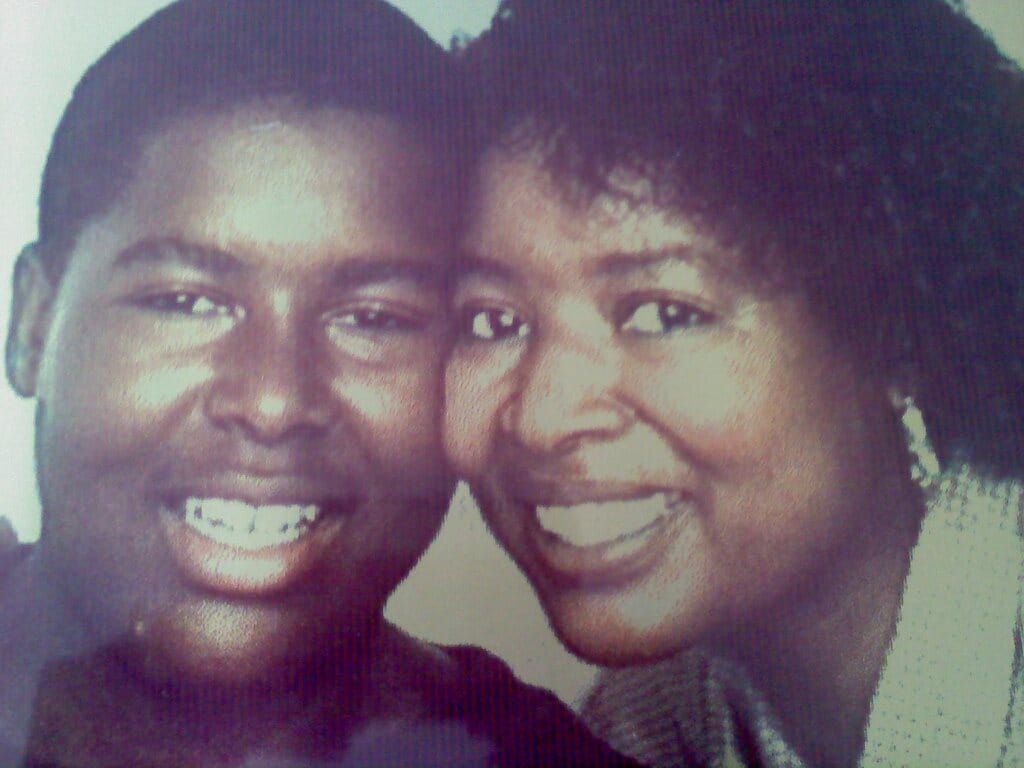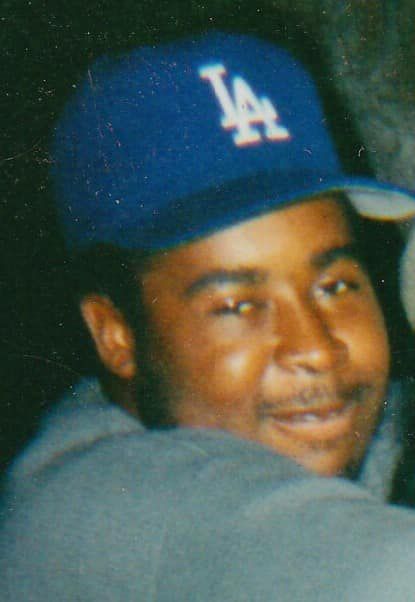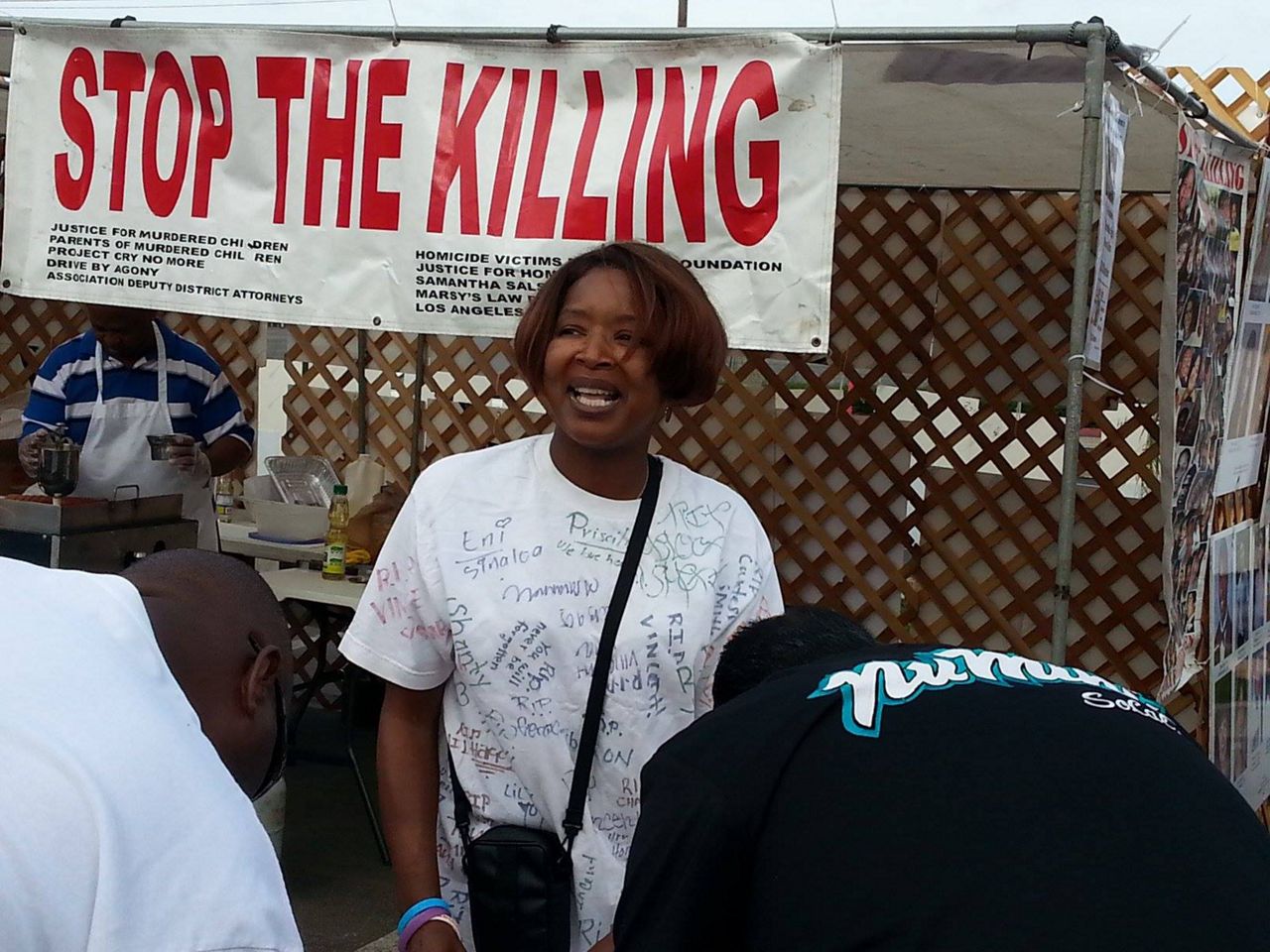LaWanda Hawkins' life wasn't just marked by the death of her only son, Reginald Reese — it was cleaved in half.
"My only son was murdered in December of 1995," Hawkins said. "After Reginald was murdered, my mind has been blown ever since. I don't know a life before that; all I remember is that I had a child and that my child was murdered."
Reginald was 19 years old when his body was found at the San Pedro waterfront, dead of multiple gunshot wounds. When he died, the light of Hawkins' life went out.
From the moment of his birth, he became her reason for being; she told herself early that she wouldn't be a stereotype but that she would make something of herself for her boy.
"I'll never forget looking at him in the hospital," Hawkins said, caught up in the memory of his birth — the smell of him, the way he felt in her arms. He changed everything about her life, inspiring her to go to school. They were constant companions; he was by her side everywhere, even in her junior college classrooms.

As an only child, he was the focus of her life — and the two weren't just a mother and son, but close friends. The two played video games together and traded cooking tips. When Hawkins married later in life, her husband blended two kids of his own into their family; Reggie was still the youngest, but when his step-siblings had kids of their own, Reggie became the proudest uncle he could be.
Hawkins had plans for her son. She saw him with a wife, with kids of his own. Together, they had dreams.
"We had plans, and it was all demolished on December the sixth. Everything that we had ever dreamed, every plan, every thing," Hawkins said.

When Reggie was killed that night, he was alone at the San Pedro waterfront. Hawkins's best figure is that he was randomly killed in gang violence — that a crew from Watts came down to San Pedro and shot Reggie to send a message that they were coming to take over.
But after more than 25 years, Reggie's killers are still free. His case remains one of nearly 50,000 murders that have gone unsolved since 1980.
"We're still looking for leads. We're looking for LAPD to solve his case, like so many others," Hawkins said.
In 1996, less than a year after Reggie's death, Hawkins founded Justice for Murdered Children, an organization dedicated to advocating for victims' families, to ensure that those killed in unsolved murders will be remembered, and that justice will be served to their killers.
Society, Hawkins said, doesn't have a support net for those people who have lost their children to violence. "They think after we bury our kids, we should go get therapy, and that should be it," Hawkins said. "They don't understand. This is a little deeper than that."
She feels it's especially egregious that folks living in South Los Angeles who lose loved ones to violence aren't given the same respect as those who live in more posh parts of Los Angeles County.
"You don't have all of these unsolved cases in Beverly Hills; why is that? Why is it allowed in South Central and not allowed in other areas? We're not saying all cases will be solved, but we don't have the resources like they do in these other areas, even though we're paying the same taxes they're paying. We're registered voters too."
Her all-volunteer organization brings together parents who have also lived through losing their children to violence and felt unrepresented by the criminal justice system. They took matters into their own hands, going out into the streets, photocopying portraits of their children, and passing them out on corners, asking if anyone knew anything.
"We got so mad. We started a petition, even though we didn't even know how — we're just mamas, we didn't go to school for this, we don't know about the law, we don't know about politics; we're not in law enforcement, we're not in the judiciary," Hawkins said. "We're just fighting for mamas, fighting for our children, and saying what happened to them was totally wrong."

Hawkins believes that the political climate then, as now, justified the murders — that "certain people deserve to be murdered, just like with domestic violence, where they blame the woman and say, what did you do to create this problem?" Hawkins said. "You have to put yourself into a position to devalue those lives, so you're able to justify this going on without doing anything. If these people's lives mattered, you would have done something drastically — we wouldn't have this many murders in our community."
After papering their communities with flyers and photos, Hawkins' mind turned to billboards, using their visibility and reach to show the faces of children killed in unsolved homicides. The idea, at first, was to show that anyone could be a victim of crime — not just minority kids, but kids from anywhere, any neighborhood.
"We've gotta show people that this is a serious problem; we're not making it up. They see them on the news for five seconds; they don't know what happens — people don't know if someone was arrested," Hawkins said. This was her idea of a follow-up to the stories that the media missed. In her mind, it also cut through the red tape involved in working within the criminal justice bureaucracy and went straight to the public, asking for their help.
Over the years, the roster of volunteers grew to include people like Theresa Haro. Haro's 15-year-old daughter, Desirree, was killed in 2003 in a drive-by shooting. Desirree was growing into herself, still trying to understand who she was and what she enjoyed. But she would never get the chance.
Around 6 p.m. on the day of her death, Desirree asked if she could go to a friend's house; her father said "no," her mother said "yes." As she left, Haro told her what she tells everyone in her family as they walk out the door: "I love you, be safe."

A few hours later, Desirree's friend showed back up at the house: only a few blocks away, Desirree had been shot. Initially, as Haro watched her daughter loaded into an ambulance, she was told Desirree had been shot in the arm — but that information was wrong. She had been shot in the head. Two hours later, she died.
The family coped. To raise money to cover funeral costs, they held car washes and were embraced by the community. Eventually, all that was left was to wait for the police to solve the crime. So they waited. And waited.
A year went by. Detectives were shuffled onto and off the case, to the point that Haro lost track of who was running the case.
LaWanda Hawkins still remembers meeting Theresa Haro. Hawkins was holding a fundraiser for the organization at Ports of Call in San Pedro when she saw Haro walking up, holding a sheet in her hand.
"So I see her walking up to Ports of Call, and she has something in her hand, and I said, 'I bet you, she's got that picture.' And if you've got that picture, you're one of us," Hawkins said. When the two met, Hawkins wrapped her into a hug and told Haro to place her daughter's portrait on the board, among the city's many unsolved murders.
Now, when Hawkins has events, Haro is there. The two are close, close friends — "ride or die," Hawkins said; coincidentally, their kids are both buried at Greenhill Cemetary, not far from one another. When one needs to talk, the other is just a phone call away. It's like that for so many of the parents in their organization.
"We're still right there. I could call her — if I'm feeling depressed, we'll talk," Haro said. "It feels good because you can talk to them. Other people, they don't know how it feels; with them, we can sit there and talk about our kids and laugh and cry and just do things together."
To this day, Desirree is among the rotation of victims of unsolved crimes, frequently one of two girls or women whose face appears with two boys or men — and, Haro noticed, her daughter's face is almost always on top.
By placing the billboards near where the crimes happened, organizers hope to jog memories and see if anyone knows who may have been involved. Next to the photos is a simple, direct question: "Do you know who murdered us?" A phone number for Justice for Murdered Children sits below, where people can reach them with tips.
The billboards have been effective. Over the years, they've helped solve five murders and bring their killers to justice and peace to their families. But Hawkins is still seeking her justice.
"Justice for me is those responsible for Reginald being arrested, charged and convicted for murder," Hawkins said. "I hope my billboards will help to remove those who commit this crime off our streets."
If you or someone you know has information regarding the murders of Reginald Reese or Desirree Haro, contact Justice for Murdered Children here or at 310-547-5362.



